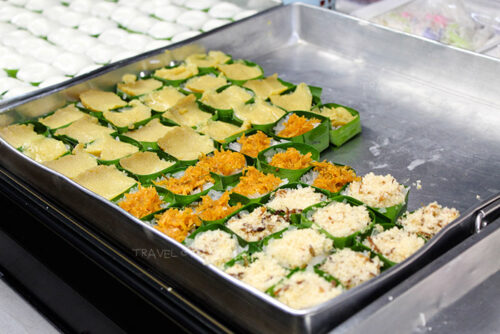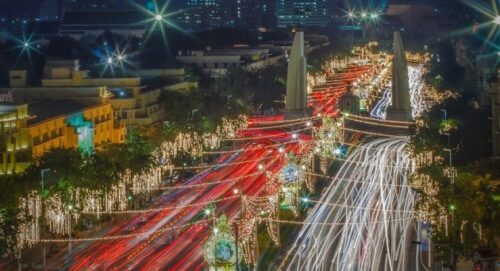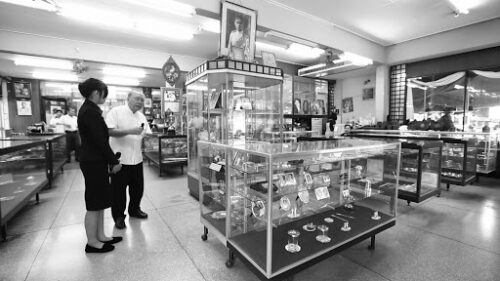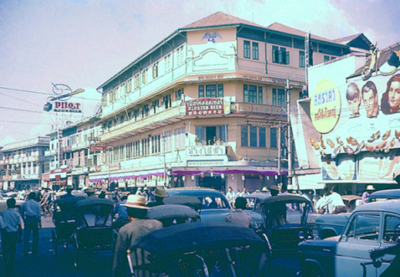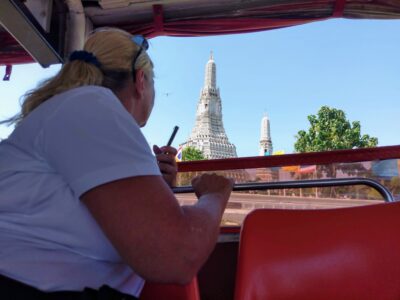Nang Loeng Market, the century-old market, was officially opened on 29th March 1901 by Rama V. Its uniqueness lies in its buildings and its vicinity’s well preserved 19th century architecture. There is another Prince Chumphon Shrine at the marekt. Due to its proximity to Prince Chumphon’s Estate, the market’s Prince Chumphpon Shrine is regarded as
Ratchadamnoen Avenue and Its Interesting Attractions Along the Road
- Blog
- 14th octorber memorial, Adventure, Bangkok attractions, Maha Chetsadabodin Pavillion Plaza, Mahakan Fort, Nitasrattanakosin, offbeat bangkok attractions, old bangkok, ratchadamnoen avenue, Ratchadamnoen Boxing Stadium, Ratchadamnoen Contemporary Art Center, Ratchadamnoen Klang (Middle Ratchadamnoen), Ratchadamnoen Nok (Outer Ratchadamnoen), Ratchdamnoen Nai (Inner Ratchadamnoen), Wat Ratchanatdaram
Rama V constructed Ratchadamnoen Avenue to serve as the main road between the Grand Palace and the Dusit Palace in 1899. It is modelled after the Champs Elysee in Paris and consits of three parts. The first part is Ratchdamnoen Nai (Inner Ratchadamnoen). The second one is Ratchadamnoen Klang (Middle Ratchadamnoen), and the third part
Since 1932, a grop of businessmen and mielloware makers from Nakhon Si Thammarat have run “Thai Nakon”, a nielloware making shop near this old Bangkok quarter. At the beginning , Thai Nakon shop produced items like cigar saskets, powder cases, picture frames, and silver trays. It also has been the purveyor to the Royal Household.
Decades ago, Bang Lamphu was the urban center with its market, department stores, cinema, theatre etc. Nowsaday, the travel business has become the top priority, and the area is full of hotels, guesthouses, travel agencies and many entertainment places. There are many artistic and cultural spaces in Bang Lamphu. If you walk around there are
The temple was built in the Ayutthaya period. The Prang of Wat Arun, Khmer style, is recognized worldwilde for its magnificence. There were many names that the temple had been called such as Wat Makok, Wat Makok Nok, Wat Chaeng and Wat Arn Rachataram. Its final name was “Wat Arun Racha Wararam during the reign
Wat Chana Songkharm or the Temple of Victory was once named ‘Wat Klang Na’ or ‘Wat Tong Pu.’ The temple was constructed in Ayutthaya period which is over 300 years old. In the reign of King Rama I, the first king of Rattanakosin Kingdom, the king restored the temple. The location of the temple was
Khaosan Road or in Thai, Thanon Khaosan (Thanon means street in Thai) was used to be the location of courtiers’ residences. The most common productr of the area is milled rice (Khaosan means rice), so the road was named ‘Khaosan Road’ for this reason. Khaosan Road in the past. Photo by https://www.silpa-mag.com/culture/article_19050 In the past, foreign
National Theatre The National Theatre or the Institution of Music and Theatre located in the old Front Palace. It was founded in 1965 as the stage for performing and other artistic-cultural related activities, and as the centre of international cultural exchange. thaipost.net There are theatrical and musical performances all year long. You will find Classical
Tha Phra Chan is an area of commercial buildings and the Tha Phra Chan (Phra Chan Pier). There are stalls, restaurants, traditional drugstores, fortune teller shops, photo shops, and small Buddha image shops are Tha Phra Chan Stalls selling Buddha tablets and amulets The small area in front of the Thammasat gate is a clothes
Located in Wang Tha Phra (Tha Phra Palace), the old palace in King Rama I’s period, Silpakorn University is the first modern art university of Thailand, founded in 1943 by Silpa Bhirasri (Corrado Feroci), a.k.a ‘Ajarn Silpa’, the Italian artist who came to work under King Rama VI’s reign. Nowadays, it is the artistic space

